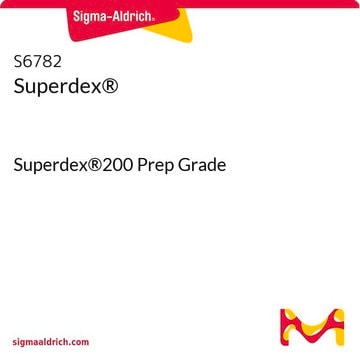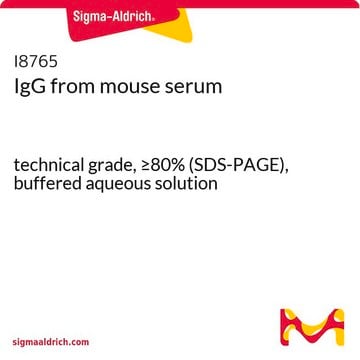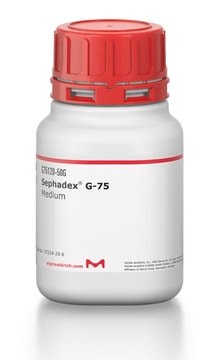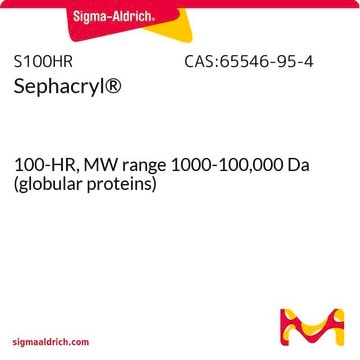S6657
Superdex®
Superdex®75 Prep Grade
Synonym(s):
Superdex Resin
About This Item
Recommended Products
form
suspension (20% aqueous ethanol)
technique(s)
protein array: suitable
matrix
cross-linked agarose
particle size
24-44 μm
pore size
3-70 kDa MW range (proteins)
500-30,000 Da MW range (dextrans)
operating pH range
1-14(short term)
3-12(long term)
storage temp.
2-8°C
Looking for similar products? Visit Product Comparison Guide
General description
Application
Legal Information
Signal Word
Warning
Hazard Statements
Precautionary Statements
Hazard Classifications
Flam. Liq. 3
Storage Class Code
3 - Flammable liquids
WGK
WGK 3
Flash Point(F)
104.0 °F
Flash Point(C)
40 °C
Certificates of Analysis (COA)
Search for Certificates of Analysis (COA) by entering the products Lot/Batch Number. Lot and Batch Numbers can be found on a product’s label following the words ‘Lot’ or ‘Batch’.
Already Own This Product?
Find documentation for the products that you have recently purchased in the Document Library.
Customers Also Viewed
Our team of scientists has experience in all areas of research including Life Science, Material Science, Chemical Synthesis, Chromatography, Analytical and many others.
Contact Technical Service










